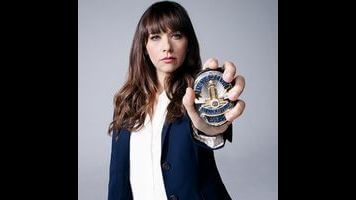Angie Tribeca walks the thin blue line between stupid and clever

The new cop comedy Angie Tribeca faces an onerous task as it heads to air this Sunday, and it has nothing to do with the 25-hour premiere party TBS is throwing for the show. That sort of thing is old-hat for the home of an annual, all-day marathon of A Christmas Story. Besides that, Angie Tribeca has been in the works since 2013, and already has a second season locked and loaded for later this year. Getting this much of the show out in one push (by re-running the show’s lineup of 10 30-minute episodes five times through) is just smart business sense.
No, Angie Tribeca’s test is a creative one: The show (created by Steve Carell and Nancy Walls Carell) is a gag-a-minute parody in the style of Mel Brooks or Zucker-Abrahams-Zucker. But whereas contemporary examples of the form like Childrens Hospital, Wet Hot American Summer: First Day Of Camp, and NTSF: SD: SUV:: (or anything else in the Abominable Pictures stable) choose to amplify the conventions of their chosen genres to surrealistic extremes, Angie Tribeca keeps things traditional. In its fictional Los Angeles police precinct, the wordplay is vaudevillian, the fourth wall is flimsy, and every frame is a blank canvas for sight gags. Given a large enough target, Angie Tribeca’s shotgun blasts find their marks with ease: When Detectives Angie Tribeca (Rashida Jones) and Jay Geils (Hayes MacArthur) attend the wake of a murdered ventriloquist, they unleash a hail of visual puns and metaphors taken literally. “I just really hope that you catch the animal that did this,” the victim’s wife tells Tribeca. “Thank you ma’am,” the detective replies, “but we think it was a human that did it.”

 Keep scrolling for more great stories from A.V. Club.
Keep scrolling for more great stories from A.V. Club.